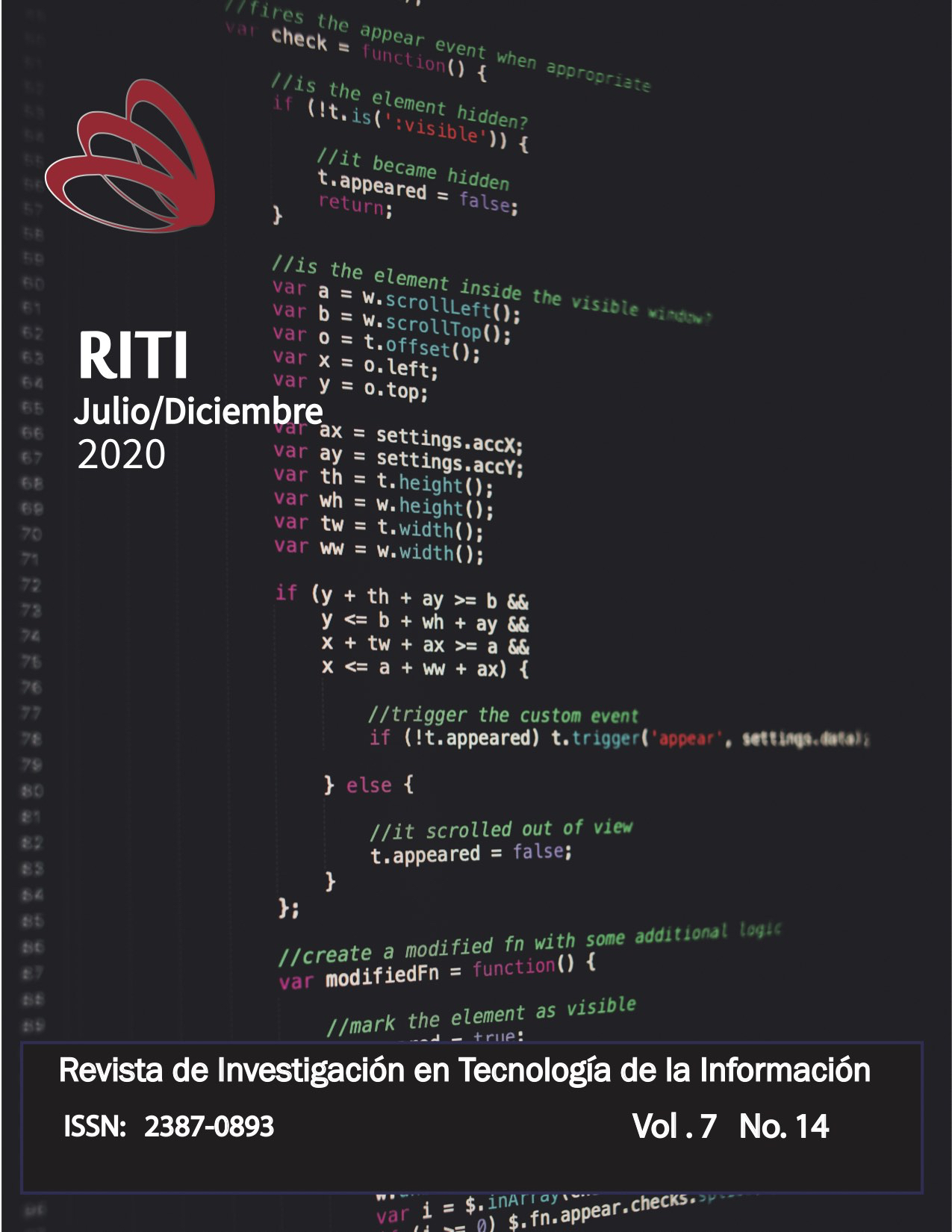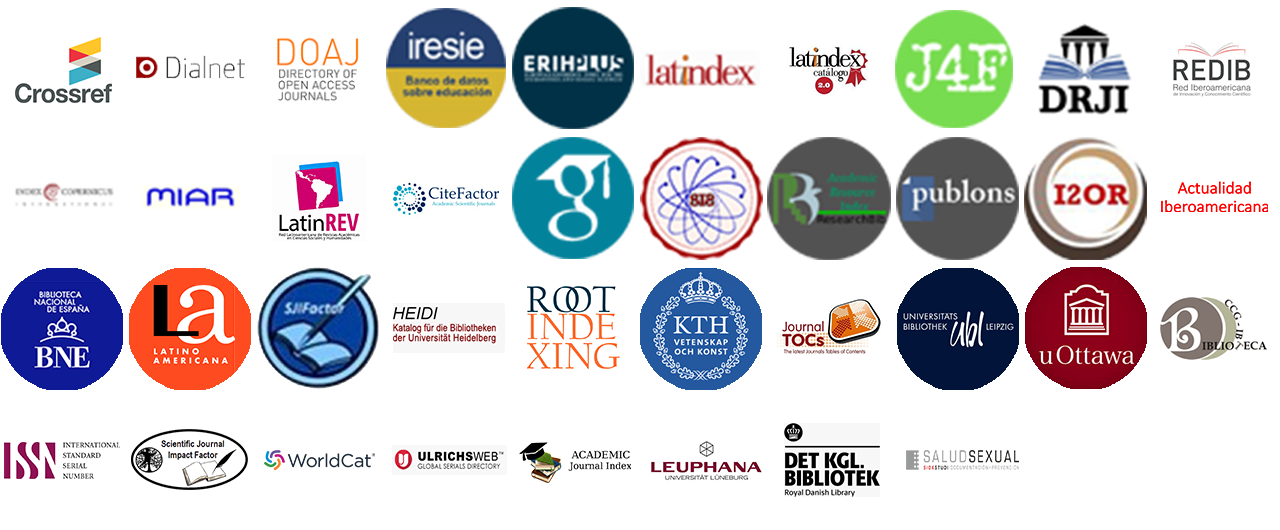The role of ICT in the port supply chain: the case of the port of Manzanillo, Mexico
DOI:
https://doi.org/10.36825/RITI.07.14.020Abstract
The aim of this research is to identify and analyze the role of information and communications technologies (ICT) in the port supply chain of Manzanillo, Mexico, specifically in the customs clearance procedures of containerized cargo. The research provides important elements for further analysis on the effect of ICT in the entire supply chain. Through the application of a survey of customs agencies, shipping lines, transport carrier companies and in-bond facilities, using stratified sampling, it was possible to identify and analyze that ICT are relevant in the customs clearance procedures of containerized cargo in the port of Manzanillo being important electronic connectivity systems and identification and traceability systems.
References
Wang, L. (2011). Study on Port logistics Marketing under the Environment of Supply Chain. International Journal of Business and Management, 6 (3), 267-271.
Song, D. W., Panayides, P. M. (2007). Global Supply Chain and Port/Terminal: Integration and Competitiveness. Maritime Policy & Management, 35 (1), 73-87. doi: https://doi.org/10.1080/03088830701848953
Cachon, G. P., Fisher, M. (2000). Supply chain inventory management and the value of shared information. Management Science, 46 (8), 1032-1048.
Fasanghari, M., Roundsari, F. H., Chaharsooghi, S. K. (2008). Assessing the impact of information technology on supply chain management. World Applied Sciences Journal, 4 (1), 87-93.
Tippins, M. J., Sohi, R. S. (2003). IT competency and firm performance: Is organizational learning a missing link? Strategic Management Journal, 24 (8), 745-761.
SCT. (2019). Se ampliará el puerto de Manzanillo en la Laguna de Cuyutlán. Recuperado de: https://www.gob.mx/sct/prensa/se-ampliara-el-puerto-de-manzanillo-en-la-laguna-de-cuyutlan
Tongzon, J., Chang, Y. T., Lee, S. Y. (2009). How supply chain oriented is the port sector? International Journal Production Economics, 122 (1), 21-34. doi: https://doi.org/10.1016/j.ijpe.2009.03.017
Talley, W. K. (1988). Optimum Throughput and Performance Evaluation of Marine Terminals. Maritime Policy & Management, 15 (4), 327-331. doi: https://doi.org/10.1080/03088838800000010
Alavi, A., Nguyen, H. O., Fei, J., Sayareh, J. (2018). Port logistics integration: challenges and approaches. International Journal of Supply Chain Management, 7 (6), 389-402.
Cipoletta Tomassian, G., Pérez, G., Sánchez, R. (2010). Políticas integradas de infraestructura, transporte y logística: experiencias internacionales y propuestas iniciales. CEPAL, Serie Recursos Naturales e Infraestructura, (150), 1-64.
Pérez S., G. (2009). La necesidad de establecer políticas integrales de infraestructura, transporte y logística. CEPAL Boletin FAL, (263), 1-4.
Notteboom, T. E. (2004). Container shipping and ports: an overview. Review of Networks Economics, 3, 86-106.
Woo, S. H., Petiti, S., Beresford, A. (2012). Logistics performance of supply chain-oriented ports. En D. W. Song, P. M. Panayides, Maritime logistics: A complete guide to effective shipping and port management (pp. 271-310). London: Kogan Page.
Cullinane, K., Song, D. W., Gray, R. (2002). A Stochastic Frontier Model of the Efficiency of Major Container Terminals in Asia: assessing the Influence of Administrative and Ownership Structures. Transportation Research Part A: Policy and Practice, 35 (8), 743-762. doi: https://doi.org/10.1016/S0965-8564(01)00035-0
Tongzon, J., Heng, W. (2005). Port Privatization, Efficiency and Competitiveness: Some Empirical Evidence form Container Ports (Terminals). Transportation Research Part A: Policy and Practice, 39 (5), 405-424.
DeSouza, G., Beresford, A., Petit, S. (2003). Liner Shipping Companies and Terminal Operators: Internationalization or Globalization? Maritime, Economics and Logistics, 5 (5), 393-412. doi: https://doi.org/10.1057/palgrave.mel.9100088
Ascencio, L. M., González, R. G., Bearzotti, L. A., Smith, N. R., Camacho, J. F. (2014). A collaborative supply chain management system for a maritime port logistics chain. Journal of Applied Research and Technology, 12 (3), 444-458. doi: https://doi.org/10.1016/S1665-6423(14)71625-6
Lin, S. M., Potter, A., Petit, S., Nair, R. (2013). A systems view of supply network integration in maritime logistics. Cardiff: Cardiff Business School.
Radhika, D. (2012). The new role of seaports as integral parts of global supply chains. International Journal of Multidisciplinary Management Studies, 2 (4), 131-144.
Notteboom, T., Neyens, K. (2017). The future of port logistics: meeting the challenges of supply chain integration. Bruselas: ING Bannk.
Host, A., Skender, H. P., Mirkovic, P. A. (2018). The perspectives of port integration into the global supply chains: the case of North Adriatic Ports. Scientific Jorunal of Maritime Research, 32 (1), 42-49. doi: https://doi.org/10.31217/p.32.1.5
Botti, A., Monda, A., Pellicano, M., Torre, C. (2017). The re-conceptualization of the port supply chain as a smart port service system: the case of the port of Salerno. Systems, 5 (2), 1-10. doi: https://doi.org/10.3390/systems5020035
Harris, I., Wang, Y., Wang, H. (2015). ICT in multimodal transport and technological trends: unleashing potential for the future. International Journal of Production Economics, 159, 88-103. doi: https://doi.org/10.1016/j.ijpe.2014.09.005
SCT. (2016). Sistema Portuario Mexicano. Primer Encuentro Regional Latinoamercano y Caribeo de Cominidades Logísticas Portuarias. Ciudad de Panamá: SELA.
Administración Portuaria Integral de Manzanillo. (2015). Handbook Puerto de Manzanillo. Recuperado de: http://www.puertomanzanillo.com.mx/esps/2110568/handbook
Zorrilla, S. (1993). Introducción a la metodología de la investigación. México: Cal y Arena.
Fischer, L., Navarro, A., Espejo, J. (2012). Investigación de mercados. México: McGraw-Hill.
Hernández, R., Fernández, C., Baptista, P. (2014). Metodología de la investigación. México: McGraw-Hill.
DGPMM-SCT. (2013). Glosario de Terminología Marítima. Recuperado de: https://www.gob.mx/cms/uploads/attachment/file/313225/05_Glosario.pdf
SAT-SHCP. (2016). Lineamientos Técnicos de Registros VOCE-SSAI M3. Recuperado de: http://omawww.sat.gob.mx/sala_prensa/boletin_tecnico/Documents/Lineamientos%20T%C3%A9cnicos%20de%20Registros%20V8.pdf
SAT. (2016). ¿Qué es la Ventanilla Única de Comercio Exterior Mexicano? Recuperado de: https://www.ventanillaunica.gob.mx/vucem/ventanillaunica.html
API Manzanillo-CGPMM. (2015). Programa Maestro de Desarrollo Portuario de los puertos de Manzanillo y Laguna de Cuyutlán 2015-202. Manzanillo: Secretaría de Comunicaciones y Transportes.
Alfaro, J. A., Rábade, L. A., Álvarez, J. L. (2007). Relaciones de integración empresa-proveedor: influencia de la trazabilidad. Universia Business Review, 15, 54-67. Recuperado de: https://www.redalyc.org/articulo.oa?id=43301504
SAT. (2018). Boletín P064-P069 Migración de Centro de Datos. Recuperado de: http://www.sistemascasa.com.mx/boletines/2018/P064.html
Published
How to Cite
Issue
Section
License
Copyright (c) 2019 Revista de Investigación en Tecnologías de la Información

This work is licensed under a Creative Commons Attribution-NonCommercial-NoDerivatives 4.0 International License.
Esta revista proporciona un acceso abierto a su contenido, basado en el principio de que ofrecer al público un acceso libre a las investigaciones ayuda a un mayor intercambio global del conocimiento.
El texto publicado en la Revista de Investigación en Tecnologías de la Información (RITI) se distribuye bajo la licencia Creative Commons (CC BY-NC
 ), que permite a terceros utilizar lo publicado citando a los autores del trabajo y a RITI, pero sin hacer uso del material con propósitos comerciales.
), que permite a terceros utilizar lo publicado citando a los autores del trabajo y a RITI, pero sin hacer uso del material con propósitos comerciales.



